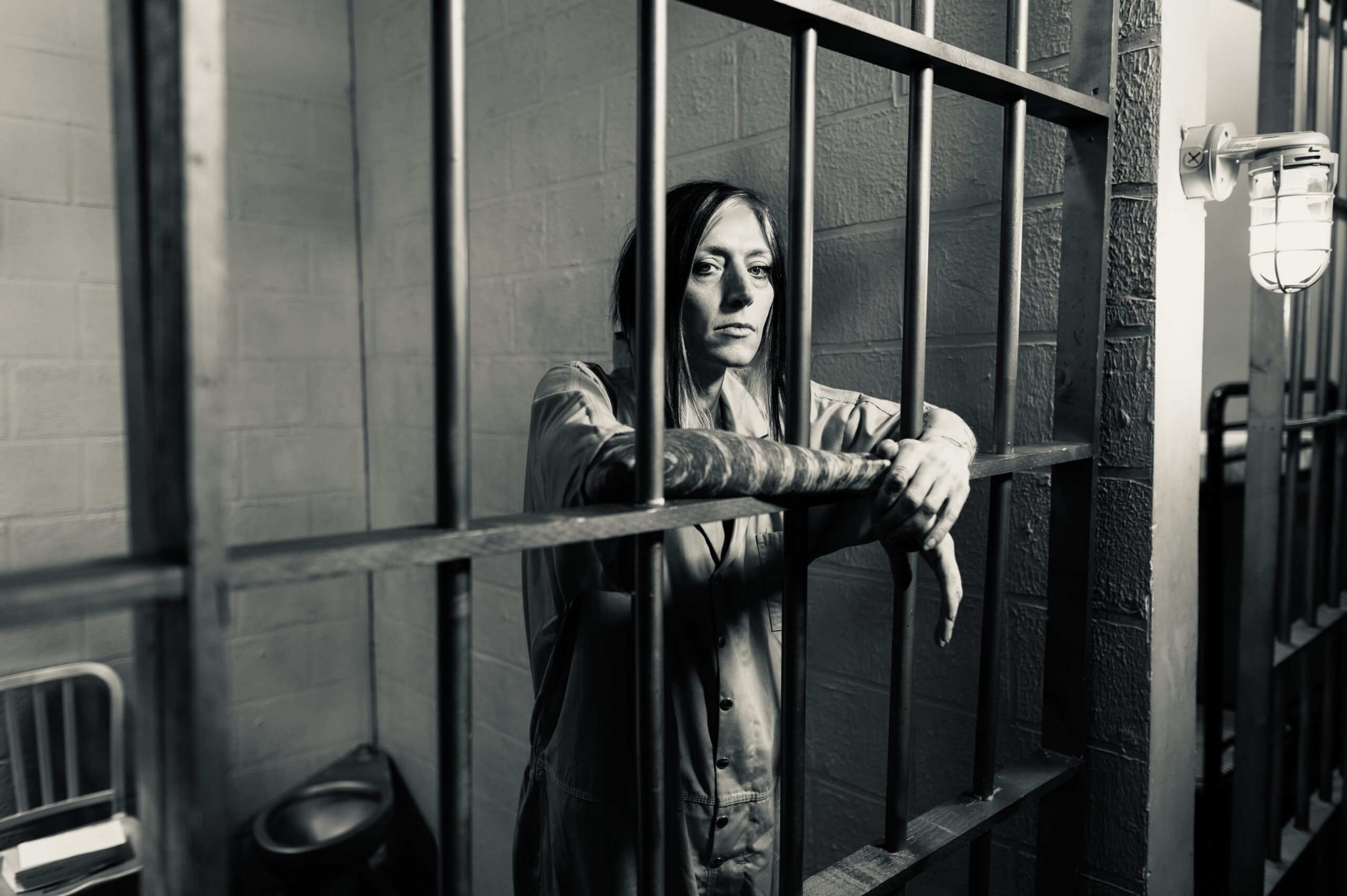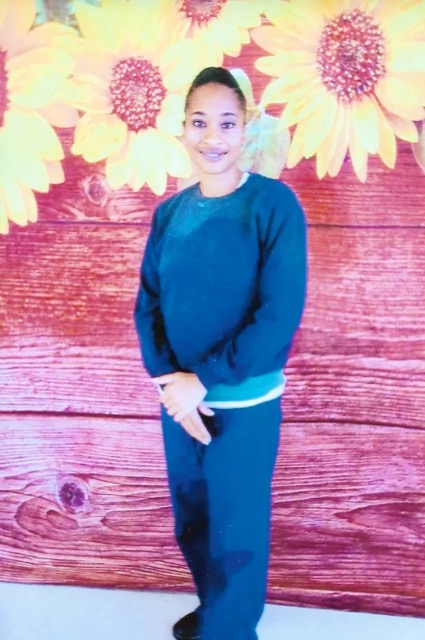Category: Listening Sessions, Personal Stories, Poverty News & Policy Updates, The Safety Net

November 10th, 2023
Tomiekia Johnson is an activist, writer, prison journalist, poet, musical artist, curator, facilitator, inside organizer, public speaker, and “prison lawyer.” Born and raised in Compton, Tomiekia earned a Bachelor’s degree in Public Administration on a basketball scholarship, worked 14 years in law enforcement as a clerk, 911 operator/dispatcher and police officer, and has over 22,700 signatures on change.org for a governor’s commutation.

The drug cart rattled by to serve 5 p.m. drugs and 8 p.m. drugs at the same time. Drugs are distributed four times a day in Central California Women’s Facility (CCWF) in Chowchilla, about 35 miles north of Fresno. The staff who man the cart give out what’s called by incarcerated men, in the men’s prisons, “the orange crack”—Suboxone.
Suboxone is a prescription combo drug/narcotic that gives an opioid-type high. These drugs are distributed to women incarcerated who can rather easily sign up for the MAT—Medical Assisted Treatment Program—and be counseled by other inmates in the OMCP—Offender Mentor Certificate Program—sponsored by the ISUDT, or Integrated Substance Use Disorder Treatment program. Try fitting all these acronyms on the front of a T-shirt.
Suboxone is one of the main medications to treat opioid addiction and it is used by many people who are in recovery. However, it is commonly abused inside CCWF, with its use skyrocketing after the COVID-19 pandemic.
A correctional counselor at CCWF, who identifies herself as CCIII Singleton, heads ISUDT and serves as the public face of the treatments. In an institutional video, she markets two main programs, a 14-week outpatient treatment and a 7-month “life skills” treatment. The video explains that people do not have to have an addiction to participate in either program.
To those incarcerated at CCWF, CCIII Singleton has been nicknamed a “queen pin” who widely distributes suboxone on a personalized sparkled-navy-blue golf cart. In my view, it is like a legalized dope-pushing with few people getting sober, in a place federally funded to rehabilitate women.
With a rise in the use of Suboxone, a market has emerged so it’s used even more widely throughout the prison.
After women cheek the meds, they spit out the slime and sell it to others. Those who do this told me this kind of drug dealing was the number one reason Covid kept spreading at the height of the pandemic, a time when drug abuse soared—seemingly everyone wanted a taste. At one point people clumped enough Suboxone for $200 a pop. Now the market is flooded, smaller amounts go for $5. Another woman told me, “It can go as low as $2, depending on who it is, like if it’s their friend.”
One day I was attending a different group in the same classroom as ISUDT when I spotted a stapled pamphlet—The ISUDT Insider. On the cover of Issue Number 35, “The Voice Within,” (May 2023) was a picture of an incarcerated man who completed the Cognitive Behavior program that Suboxone-using women formerly had to complete. “So the Cognitive Behavior program is still offered in the men’s prisons, but not required for addicted women webbed in a drug epidemic?” I asked myself. Although this math ain’t mathing, it checks out with the backwards society that is designed to keep women second class to society and our incarcerated male counterpart.
I’ve seen women go to work dangerous jobs while high on the drug: shuttle driving, culinary gigs chopping vegetables with sharp knives, or scaling rooftops in Plant Operations. They can also go to school, vocational training like Building Maintenance, college, and other programming.
Yet I’m told one of my peers was rolled over (denied parole) at her Board of Parole Hearing (BPH) because she volunteered to join the orange crack epidemic. Allegedly, BPH told her she couldn’t be ready to go home if she needed Suboxone. Let that sink in.

One muggy morning I was working in the “weight pile” (workout area) as a fitness trainer on the yard. It was triple digits and too hot to work out so women grabbed a seat to chitchat. An older Hispanic woman perched on her walker’s seat started talking about how she felt like CCWF medical were trying to persuade her to get hooked on Suboxone.
“The nurses tried to keep giving me Suboxone, asking me why I wasn’t taking it and insisting I need it for pain. I felt like they were drug dealers on the corner pushing me to take drugs. I don’t need it. I’m managing just fine,” she said.
I validated the woman saying “no”: “I’m proud of you.” She smiled.
I hope more defectors come out and blow the whistle on what seems like a federally funded drug ring that’s debilitating women. Governor Newsom allocated more than $14.5 billion per year for CDCR over the last 2 years. It’s clear women aren’t getting the treatment they deserve or need—at least at Chowchilla. Instead of preparing them for the real world, too many are hooked on Suboxone, or dealing it to others—and the drug is illegal in many jurisdictions and will land them right back in prison. And the “queen-pin” is either failing to address it, or even fueling it, depending on your perspective.
I hope this is a clarion call for the entire community.
CDCR responded that Suboxone is administered “once daily to patients… in a highly controlled and safe manner as a quickly dissolving strip via medication lines which operate four times per day”; that “CDCR is committed to the safe, controlled, and effective distribution of all prescribed medications;” and that “the ISUDT program operates in all California prisons and all incarcerated individuals have access to treatments and resources to support success in recovery.” Moreover, “Cognitive Behavioral Interventions are offered to all persons with Substance Use Disorder diagnoses regardless of prison [or] gender” and “mandatory participation in programs is the same for all genders.” Finally, CDCR points to the following data as indicative of the effectiveness of the ISUDT program: 54% reduction in CDCR’s overdose death rate following implementation; 50% reduction in the opioid overdose death rate; 30% reduction of overdose-related community hospitalizations and emergency department visits among those on MAT.